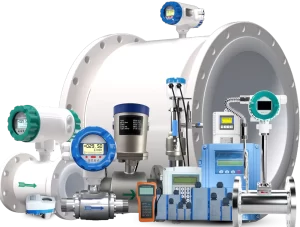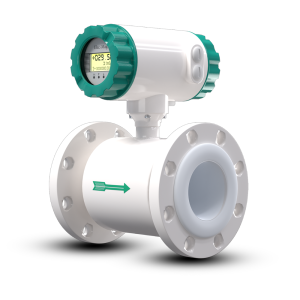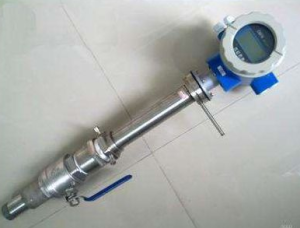Magnetic flowmeters are among the most widely used instruments in industrial applications for measuring the flow of liquids. Known for their accuracy, reliability, and non-intrusive nature, they’ve become the go-to solution in water treatment plants, food and beverage production, pharmaceuticals, and chemical processing industries. But while these flowmeters are versatile, they’re not suitable for every type of liquid.
In this article, we’ll take a deep dive into how magnetic flowmeters work, their advantages, limitations, and most importantly — which liquid cannot be measured by a magnetic flowmeter and why. Whether you’re a plant engineer, maintenance technician, or simply curious, this guide will walk you through everything you need to know.
What is a Magnetic Flowmeter?

A magnetic flowmeter (also called a mag meter) is a type of volumetric flowmeter that measures the flow rate of a liquid using Faraday’s Law of Electromagnetic Induction. According to this principle, when a conductive fluid flows through a magnetic field, it generates a voltage proportional to the flow velocity. The flowmeter picks up this voltage and converts it into a flow rate.
In simpler terms, it measures how fast a liquid is moving through a pipe, as long as that liquid can conduct electricity.
How Does a Magnetic Flowmeter Work?
Here’s a step-by-step breakdown of the process:
-
Electromagnetic coils generate a magnetic field across the pipe.
-
As the conductive liquid flows through the pipe, it cuts through the magnetic field.
-
This movement generates a voltage signal between electrodes placed on the pipe wall.
-
The magnitude of the voltage is directly proportional to the velocity of the liquid.
-
The flowmeter then calculates the volumetric flow rate based on this signal.
This is why only conductive liquids can be measured with a magnetic flowmeter. It’s a fundamental requirement.
Key Advantages of Magnetic Flowmeters
Magnetic flowmeters have several benefits that make them attractive in many industries:
-
No moving parts: Reduces wear and maintenance.
-
High accuracy: Suitable for critical applications.
-
Wide range of pipe sizes: From small pipelines to large industrial systems.
-
Bidirectional measurement: Can measure flow in both directions.
-
Unaffected by pressure, temperature, and viscosity: Great for various process conditions.
But despite these advantages, magnetic flowmeters are not universal.
The Critical Limitation: Electrical Conductivity
Here’s the key limitation: Magnetic flowmeters require the liquid to have a minimum level of electrical conductivity.
Typical threshold: Greater than 5 µS/cm (microsiemens per centimeter)
If a liquid has conductivity below this threshold, the flowmeter won’t be able to generate a detectable signal, making accurate measurement impossible.
So, Which Liquid Cannot Be Measured by a Magnetic Flowmeter?
Non-Conductive Liquids
The most important category of liquids that cannot be measured using a magnetic flowmeter are non-conductive liquids. These include:
-
Pure distilled water (especially at high temperatures)
-
Hydrocarbons (such as gasoline, diesel, kerosene)
-
Oils (vegetable oils, motor oils, mineral oils)
-
Solvents (like benzene, toluene, and ethanol under certain conditions)
-
Liquefied gases (like liquid nitrogen or liquid oxygen)
These fluids have extremely low or negligible electrical conductivity, rendering magnetic flowmeters ineffective.
Why Can’t Magnetic Flowmeters Measure Non-Conductive Liquids?
Let’s break this down a bit further:
-
The entire working principle of a magnetic flowmeter relies on inducing voltage in a conductive medium.
-
When the fluid cannot conduct electricity, no voltage is produced.
-
Without voltage, the flowmeter’s sensors can’t detect any flow, even if the liquid is moving.
So if you’re trying to measure oil or gasoline, a magnetic flowmeter will simply give you no reading at all — or worse, inaccurate data that could disrupt your process.
Conductivity Thresholds: Where to Draw the Line
Here are some typical conductivity values (in µS/cm):
| Liquid | Conductivity (µS/cm) |
|---|---|
| Tap Water | 50 – 500 |
| Sea Water | 50,000 |
| Distilled Water | ~0.5 |
| Hydrocarbons (e.g., oil) | < 0.01 |
| Milk | 4,000 – 6,000 |
| Beer | 500 – 1,000 |
| Juices | 3,000 – 10,000 |
As you can see, distilled water and hydrocarbons fall far below the measurable range.
What Happens if You Try to Use a Mag Meter on a Non-Conductive Fluid?
-
No signal output: The meter reads zero or shows a fault.
-
Unstable or erratic readings: If the conductivity is borderline, data may fluctuate.
-
Long-term damage: Not directly, but using an unsuitable meter can lead to operational errors and risks.
In short, you’ll waste time, resources, and potentially compromise safety by misapplying the technology.
Alternatives to Magnetic Flowmeters for Non-Conductive Fluids
If your application involves non-conductive liquids, don’t worry. There are alternative flow measurement technologies:
-
Ultrasonic Flowmeters
-
Work by sending sound waves through the fluid.
-
Ideal for both conductive and non-conductive liquids.
-
Can be clamp-on, avoiding pipe penetration.
-
-
Turbine Flowmeters
-
Use mechanical rotors to measure flow.
-
Suitable for clean, low-viscosity, non-conductive fluids like hydrocarbons.
-
-
Coriolis Flowmeters
-
Measure mass flow rather than volumetric.
-
High precision, suitable for various fluid types, including oils and solvents.
-
-
Positive Displacement Meters
-
Trap a fixed amount of liquid and count cycles.
-
Great for viscous fluids like oils and syrups.
-
Choosing the right meter depends on fluid type, process requirements, and budget.
Can You “Trick” a Magnetic Flowmeter into Measuring Non-Conductive Fluids?
It’s a common question — is there a way to “enhance” conductivity artificially?
Some experimental solutions involve adding salts or conductive additives to increase conductivity, but:
-
It’s not practical for most real-world applications.
-
It can alter the fluid’s properties, making it unsuitable for its intended use.
-
It can damage equipment or void warranties.
In other words, don’t do it unless it’s part of a carefully engineered process.
Common Applications Where Magnetic Flowmeters Are NOT Used
You’ll rarely (if ever) find mag meters in the following industries:
-
Oil & Gas (due to hydrocarbons being non-conductive)
-
Petrochemicals
-
Solvent recovery
-
High-purity water systems (such as in electronics manufacturing)
-
Fuel handling systems
These industries typically rely on turbine, Coriolis, or ultrasonic meters instead.
Conclusion: Know Your Fluid Before Choosing Your Flowmeter
Magnetic flowmeters are a powerful and accurate tool, but only when applied correctly. Their effectiveness hinges on one crucial factor — electrical conductivity. If your liquid is non-conductive, such as oil, fuel, or pure water, a magnetic flowmeter is not the right choice.
Instead, consider alternative technologies tailored to those fluids. Selecting the correct flowmeter isn’t just about precision — it’s about safety, efficiency, and cost-effectiveness.
In summary:
👉 If your liquid doesn’t conduct electricity, it cannot be measured by a magnetic flowmeter.
👉 Choose the right tool for your specific fluid — your process (and your budget) will thank you.
We are a manufacturer of automatic flow meters with many years of experience in the industry. We have strong independent research and development capabilities and are a leader in the flow meter industry. Our main products include electromagnetic flow meters, vortex flow meters, turbine flow meters, ultrasonic flow meters, Coriolis flow meters, various solenoid valves, level meters, control units and valves, etc. Welcome to purchase –Best Instrument





